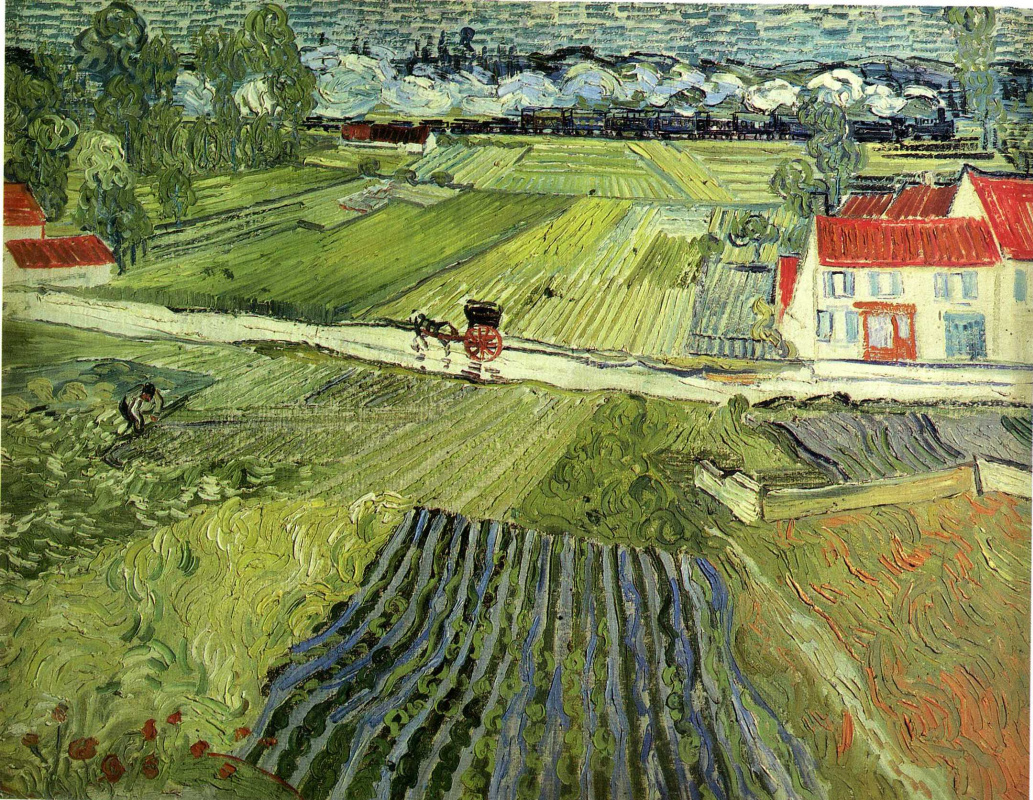log in
Enter site
Login to use Arthive functionality to the maximum
Landscape at Auvers after the Rain
Vincent van Gogh • Painting, June 1890, 72×90 cm
Description of the artwork «Landscape at Auvers after the Rain»
In May 1890, Vincent Van Gogh moved to Auvers-sur-Oise, a small village north of Paris. There he lived in the tiny room above the café Auberge Ravoux, a modest establishment on the main city square. In the attic under the roof, the only furniture was a chair and a camp bed, but Vincent paid no attention to the inconvenience, since he spent little time at his new home. Early in the morning, he would take his easel and a box of paints and go to explore the surroundings. Van Gogh wrote to his brother that he loved the local nature. “Auvers is very pretty,” he wrote, “there is countryside all around, typical and picturesque.”
In Auvers, Vincent was treated by the homeopathic physician Dr. Paul Gachet. At first, thanks to his attention and sincere interest, Van Gogh felt much better than in Arles or Saint-Rémy. The seizures completely stopped, the artist led a quiet and measured life without much shock. But over time, when Vincent worked tirelessly, forgetting to eat and sleep, he was struck by the familiar fever again. Still, Dr. Gachet did not try to limit the artist in this endeavor, believing that he needed to paint as much as possible. Gradually, a familiar sense of anxiety and the futility of his own existence crept on the artist. Giving his all to art, Vincent only aggravated the situation.
Between 17 June and 27 July, Van Gogh painted thirteen double-square canvases of the gardens and fields around Auvers. Landscape at Auvers after the Rain was also created in the same period (it is assumed that the picture was painted three days before the artist's suicide). Unlike the Wheatfield with Crows, impregnated with the feeling of impending disaster, this canvas seems idyllically peaceful. The landscape in which one can clearly see the influence of Japanese aesthetics is painted from a high point, which simultaneously causes a sense of flight and detachment from what is happening, from a glance from the outside. Capturing on a canvas a beautiful summer day, a living, breathing landscape, Vincent at the same time seems to understand and makes it clear to the viewer that there is no longer room for him there.
In Auvers, Vincent was treated by the homeopathic physician Dr. Paul Gachet. At first, thanks to his attention and sincere interest, Van Gogh felt much better than in Arles or Saint-Rémy. The seizures completely stopped, the artist led a quiet and measured life without much shock. But over time, when Vincent worked tirelessly, forgetting to eat and sleep, he was struck by the familiar fever again. Still, Dr. Gachet did not try to limit the artist in this endeavor, believing that he needed to paint as much as possible. Gradually, a familiar sense of anxiety and the futility of his own existence crept on the artist. Giving his all to art, Vincent only aggravated the situation.
Between 17 June and 27 July, Van Gogh painted thirteen double-square canvases of the gardens and fields around Auvers. Landscape at Auvers after the Rain was also created in the same period (it is assumed that the picture was painted three days before the artist's suicide). Unlike the Wheatfield with Crows, impregnated with the feeling of impending disaster, this canvas seems idyllically peaceful. The landscape in which one can clearly see the influence of Japanese aesthetics is painted from a high point, which simultaneously causes a sense of flight and detachment from what is happening, from a glance from the outside. Capturing on a canvas a beautiful summer day, a living, breathing landscape, Vincent at the same time seems to understand and makes it clear to the viewer that there is no longer room for him there.


